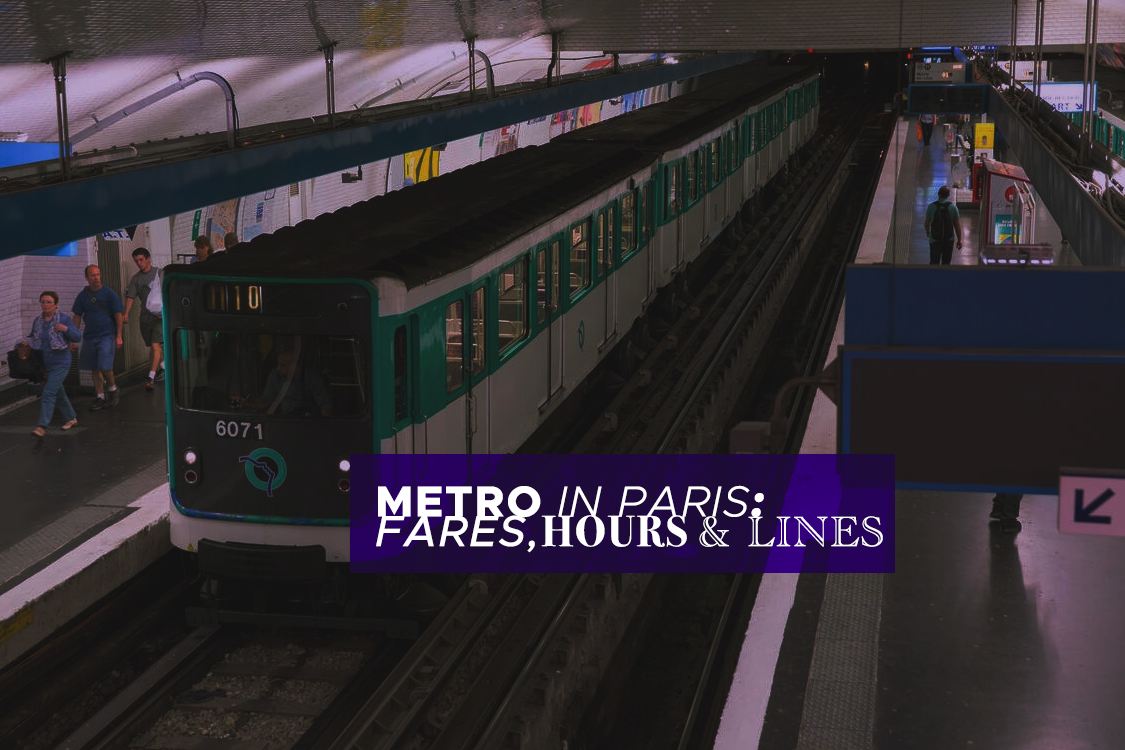Navigating the intricate network of the Paris Metro can be both an adventure and a puzzle for first-time visitors to the City of Light. With its extensive history, spanning over a century, and a vast network covering more than 300 stations, the Paris Metro is the lifeline of the French capital. This guide provides everything you need to know about how to use the Metro in Paris, from understanding fares and hours of operation to deciphering the map and identifying the right lines for your journey.
Understanding the Paris Metro Network
The Paris Metro, operated by RATP, is a sprawling underground network that serves the heart of Paris and its outskirts. It comprises 16 lines that stretch over 220 kilometers, making it one of the most comprehensive subway systems in the world. Each station is marked with iconic signs, such as “M,” “Métro,” or “Metropolitain,” guiding you to the entrance.
Key Points to Remember:
- Integrated Transport System: RATP not only manages the Metro but also the Paris buses and RER suburban trains, ensuring seamless connectivity across different modes of transport.
- RER vs. Metro: The RER is a separate rail system designed to serve the broader Île-de-France region, with some lines running through Paris. While it may appear similar to the Metro, it’s crucial to use Metro lines for city travel to avoid confusion and potential fines.
- Station Layout: Most stations feature two platforms facing each other, serving trains running in opposite directions. To determine your direction, look for the name of the last station on the line displayed below the timers.
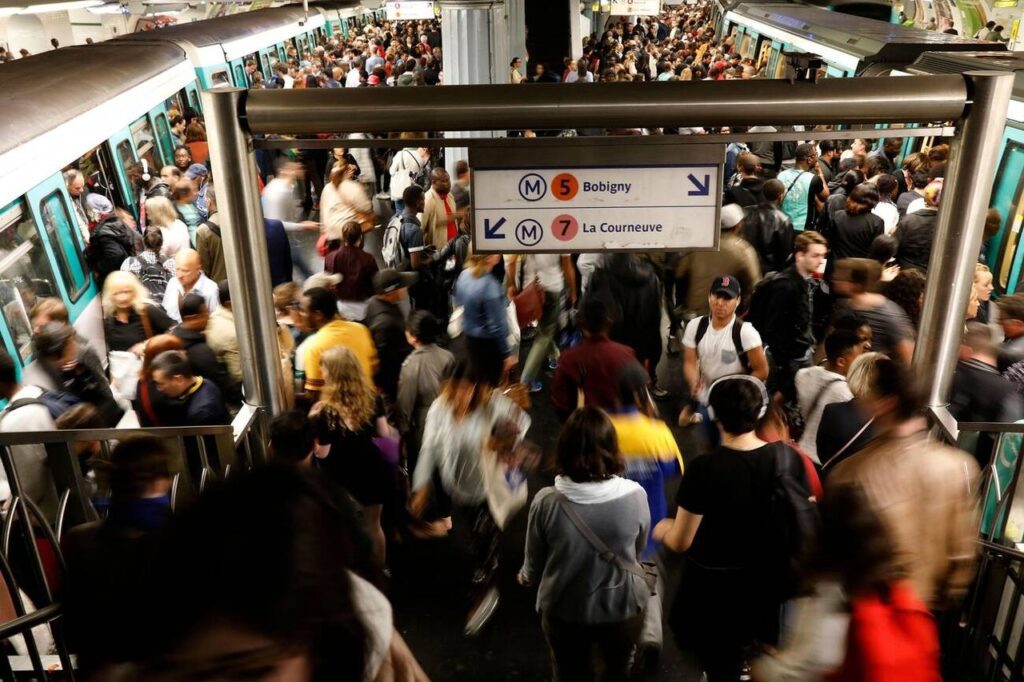
Mastering Paris Metro Tickets and Fares
Navigating the Paris Metro starts with understanding the various ticket options available to travelers. Whether you’re darting across the city or venturing to landmarks beyond, knowing the ins and outs of Metro tickets and fares can save you time and hassle.
Getting Started: Tickets and Barriers
To enter the Metro, you’ll need a ticket or a travel pass. Insert your ticket into the automatic barrier, wait for validation, and then proceed through. This process is straightforward and mirrors that of other major cities like London.
Ticket Types and Purchases
How to Purchase Tickets: Tickets can be bought at station ticket windows or machines, which accept coins and credit cards (make sure your card has a chip). For convenience, tickets are also available at tabacs and some newsstands.
Normal Tickets: A popular choice is the carnet, a book of 10 single-use tickets (T+ tickets), costing €17.35 and valid on the metro, bus, tram, Montmartre funicular, and RER (within zone 1).
Farewell to Cardboard Tickets
From October 2021, the cardboard T+ ticket packs of 10 will be phased out in favor of more practical solutions like contactless tickets and digital options, addressing issues like demagnetization and loss.
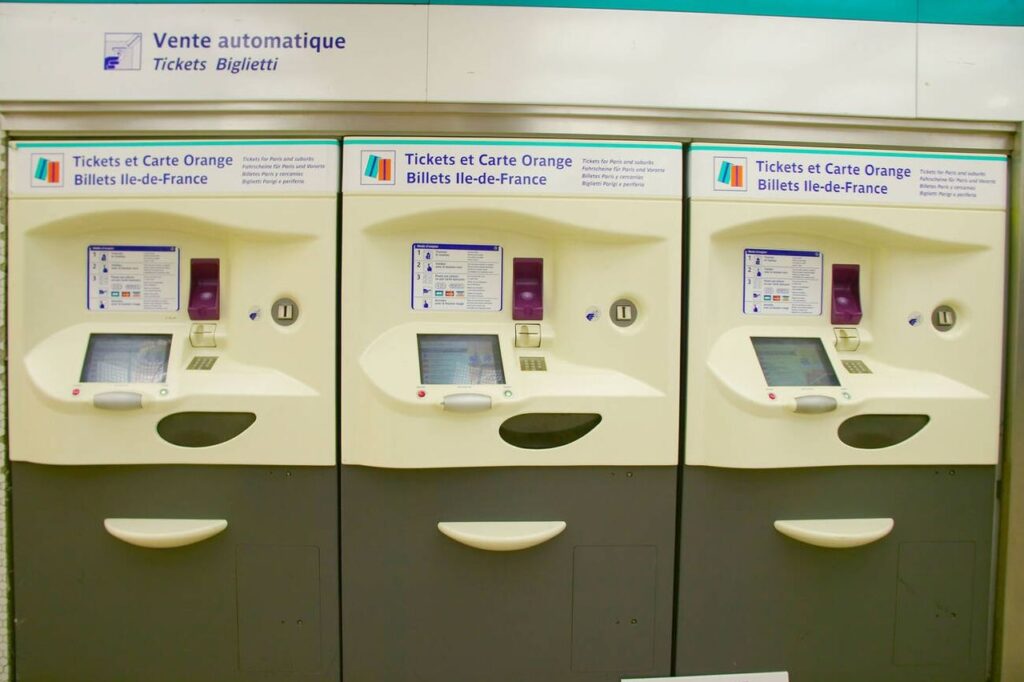
Alternatives to Cardboard Tickets
- Navigo Liberté +: Ideal for regular passengers, this pass calculates your monthly travel costs based on usage.
- Navigo Easy Pass: A rechargeable card costing €2, perfect for visitors, allowing digital or contactless ticket purchases.
- Mobile Ticketing: Compatible smartphones can store and validate tickets through dedicated apps.
Unlimited Travel Options
For those planning extensive use of public transport, unlimited day passes are available (1, 2, 3, or 5 days), which might be more cost-effective depending on your itinerary.
Paris Metro Fares (T+ Tickets) for 2024
- Single Ticket: €2.10
- Contactless t+ 10 tickets (adult): €17.35
- Contactless t+ 10 tickets (child): €8.65
These tickets are valid for a single journey across the Metro, buses, or zone 1 RER trains.
Navigo Easy Pass
The Navigo Easy Pass is a reusable, refillable card for €2, functioning like London’s Oyster card. It can be loaded with single tickets or a packet of 10 at a discount, offering a convenient, paper-free option for Metro travel.
Navigo Découverte Pass
The Navigo Découverte offers unlimited travel for a week across the Metro, RER, buses, and trams, including destinations like CDG, Disneyland Paris, and Versailles for €30. The pass is valid from Monday to Sunday, with a €5 cost plus a passport photo.
Paris Visite Pass
Tailored for tourists, the Paris Visite Pass provides unlimited public transport access for 1-5 consecutive days across selected zones, potentially offering value depending on your travel plans. Discounts are available for children, making it a family-friendly option.
Tips for Using Tickets
- Ticket Validation: Always validate your ticket before entering the platform and keep it until you exit the system.
- Zone Coverage: Ensure your ticket covers the zones you’re traveling to, especially when using the RER for destinations like Disneyland Paris or Versailles.
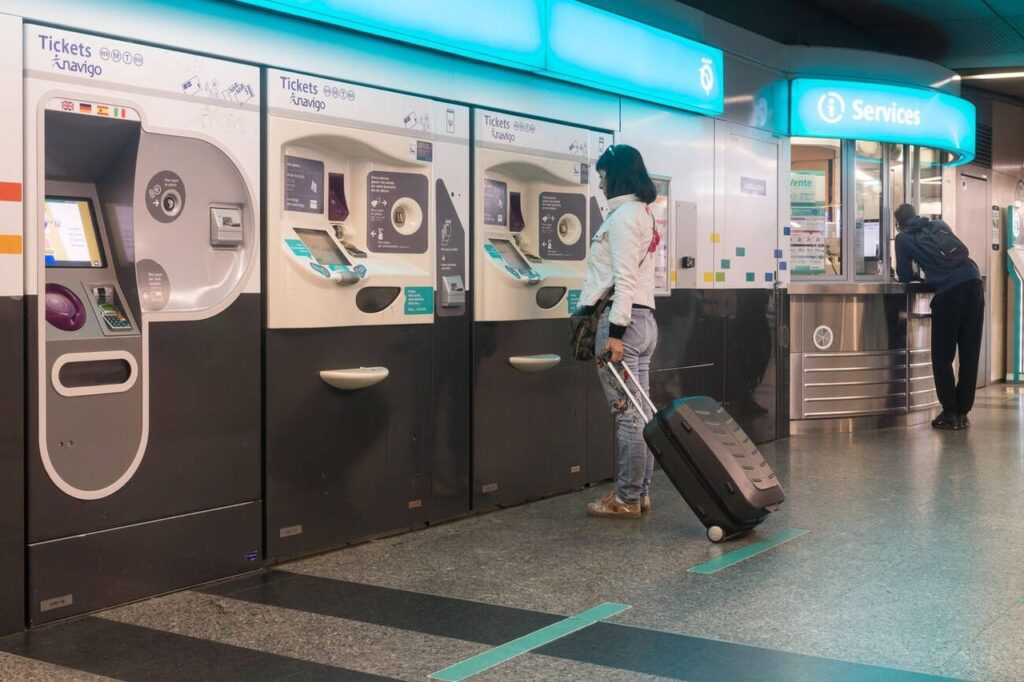
Operating Hours and Frequency
- The Paris Metro starts its service at 5:30 AM, extending till 1:00 AM on weekdays.
- On Fridays and Saturdays, the service is extended till 2:00 AM to accommodate the vibrant nightlife of Paris.
- During peak hours, trains run every 2 minutes, ensuring that you’re never waiting too long for a ride.
Planning Your Journey: Paris Metro Travel Tips
- RATP Website and App: For the most accurate and up-to-date information on schedules, use the official RATP website or its mobile app.
- First and Last Trains: Always check the timing of the first and last trains to avoid being stranded, especially if you plan to stay out late.
- Hold Onto Your Ticket: Keep your paper ticket until you exit the Metro station completely. Fare inspections are common, and lacking proof of payment can result in fines. The Navigo Easy Pass, being digital, mitigates the risk of losing individual paper tickets.
- Children’s Fares: Children under 4 travel free, but those aged 4-10 benefit from a 50% fare reduction. Ensure they have their own ticket or pass for travel.
Navigating with the Paris Metro Map
Mastering the Paris Metro is easy with the right tools. Here’s a quick guide to the essential maps and resources that will help you navigate the city’s public transport like a pro:
Paris Metro and Bus Maps
- Tourist Offices: Grab a free physical map upon arrival at tourist kiosks. It’s detailed, showing Metro, RER, and bus lines, perfect for planning diverse journeys.
Online Metro and RER Maps
- Paris Metro Map: Essential for all Metro travelers, this map provides a comprehensive overview of lines and stations. Access it here.
- RER Map: Ideal for trips to key destinations outside central Paris like Disneyland and Versailles. Download the map here.
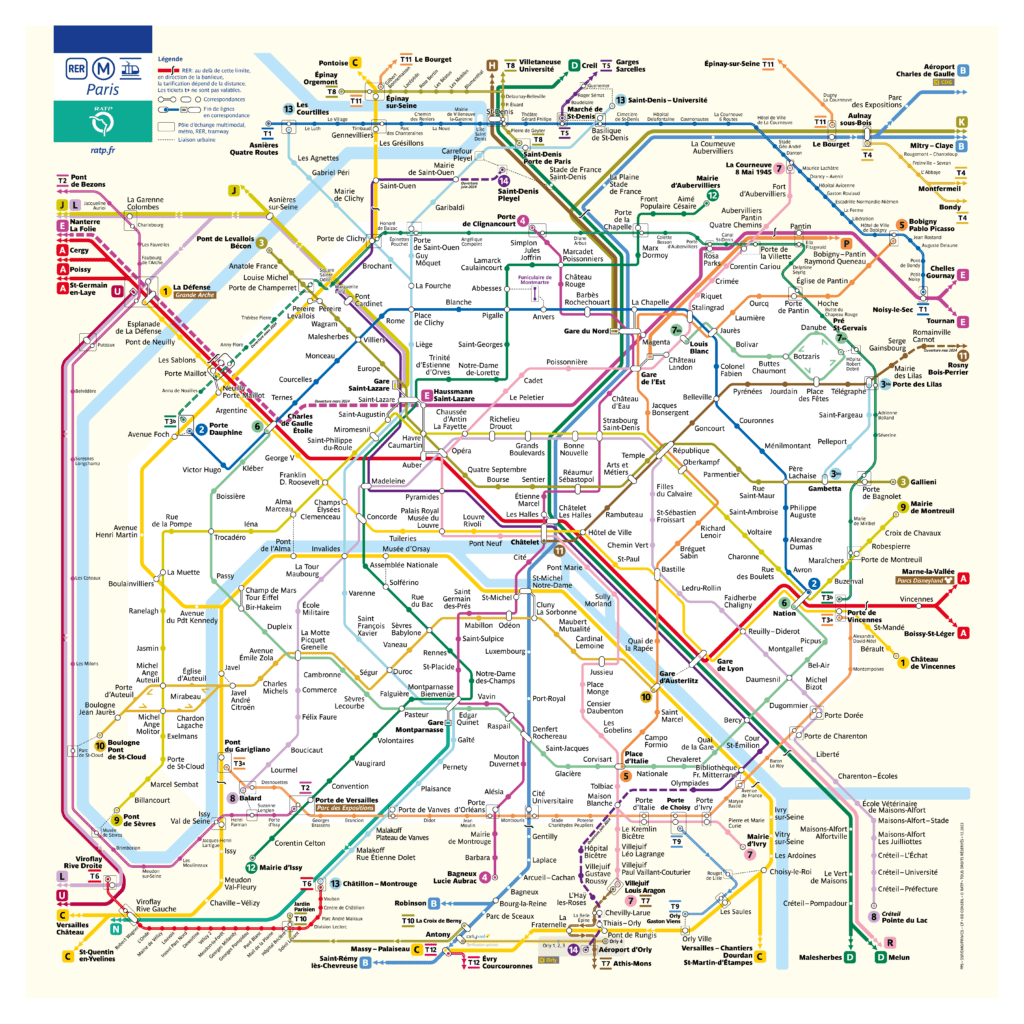
Paris Public Transport Zones
The city and its suburbs are divided into five main transportation fare zones, a system separate from the 20 arrondissements (neighborhoods) Paris is famous for. These zones are particularly relevant when using travel passes or when your journey includes the RER trains or buses, extending beyond the usual Metro routes.
Zones 1-3: The Heart of Paris
- Coverage: Encompasses central Paris, including the majority of tourist attractions and most hotels. Iconic landmarks such as the Eiffel Tower, the Louvre, Musée d’Orsay, and the Arc de Triomphe are all nestled within these zones.
- Metro Operation: The Paris Metro subway primarily operates within zones 1 to 3, with the bulk of its stations in zone 1, making it the focal point for visitors.
Zone 4: Gateway to Versailles and Orly Airport
- Key Destinations: Zone 4 is home to the majestic Chateau Versailles and Orly Airport.
- Access: The Paris Metro does not extend to zone 4. To reach Versailles, one must take the RER train to Versailles-Rive Gauche. For Orly Airport, the journey involves taking the RER train to Antony, followed by the OrlyVal train, a dedicated automatic train service to the airport.
Zone 5: Charles de Gaulle Airport and Disneyland Paris
- Key Destinations: The furthest zone, zone 5, is where you’ll find Charles de Gaulle Airport and the enchanting Disneyland Paris.
- Access: Reaching CDG Airport requires taking the RER train to either Aéroport Charles de Gaulle 1 (for terminals 1 & 3) or Aéroport Charles de Gaulle 2 (for terminal 2). Disneyland Paris is accessible via the RER train to Marne-la-Vallée — Chessy.
Practical Tips for Navigating Paris Zones
- Plan Ahead: Before starting your journey, identify which zone your destination falls into. This is crucial for selecting the correct ticket or pass.
- Travel Passes: For visitors planning extensive use of public transport, consider purchasing a travel pass that covers multiple zones. This can offer unlimited travel within the specified zones and can be more cost-effective than single tickets.
- RER for Longer Journeys: When traveling to destinations like Disneyland or the airports, the RER becomes an essential part of your journey. Ensure your ticket covers the zones you’ll be traversing.
Navigating the Paris Metro: Practical Insights for Seamless Travel
The Paris Metro, with its extensive network and frequent service, is a cornerstone of city transportation, offering an efficient way to explore the vast array of sights and neighborhoods. Here are essential tips and safety advice to enhance your Metro experience, ensuring you navigate the system like a seasoned Parisian.

Finding Your Way in Paris Metro
Upon entering a Metro station, you’ll typically be greeted by a large network map. Many stations also provide neighborhood maps detailing the locations of exits (“sorties”), invaluable for orienting yourself upon departure. Key to navigating the system is spotting and following the signs to your desired line or exit, simplifying your journey through the network’s labyrinthine corridors.
Considerations for Travelers with Luggage or Strollers
The Metro’s architecture, characterized by numerous stairs and lengthy hallways, may pose challenges for those carrying bulky luggage or navigating with strollers. In such cases, alternative transport options might be more practical, ensuring a smoother transit experience.
Paris Metro Safety Tips
- Stay Vigilant Against Pickpockets: Crowded trains are prime targets for pickpockets. Keep bags securely closed and within sight, preferably in front of you. Using locks on zippers or opting for less accessible bags can deter thieves.
- Smartphone Use: Exercise caution when using your smartphone in stations or on trains, as they are attractive targets for theft, occasionally involving force.
Read also: How to Avoid Pickpocketing in Paris: Save Your Things and Phone (2024)
Journeying Beyond Paris with Metro & RER
- To Versailles Palace: Take the RER C yellow line to Versailles – Rive Gauche, a 45-minute ride followed by a short walk. Start from central Paris stations like Saint-Michel, Orsay Museum, or Champ de Mars. Avoid the line heading to Saint-Quentin-en-Yveline, which shares the platform.
- To Disneyland Paris: Opt for the RER A4 red line, embarking at central locations such as Chatelet Les Halles, Gare de Lyon, or Gare Auber. Ensure your train’s destination is Marne la-Vallée, the terminus and gateway to Disneyland, approximately a 40-minute ride away.
Paris Metro Etiquette
Riding the Metro is not just about getting from point A to point B; it’s also about respecting the unspoken rules of Parisian public transport:
- Priority Seating: Always give up your seat to the elderly, pregnant women, or those with disabilities.
- Keep Right on Escalators: Stand on the right side, leaving space for others to pass on the left.
- Mind Your Belongings: Be vigilant of pickpockets, especially in crowded stations or during peak hours.
Conclusion: How to Use the Metro in Paris
The Paris Metro is more than just a means of transportation; it’s an integral part of the city’s culture and history. With this guide, you’re now equipped to navigate the Metro like a local, blending seamlessly into the rhythm of Parisian life. Remember to plan your journeys, stay aware of your surroundings, and most importantly, enjoy the ride through one of the most beautiful cities in the world.
If You Liked Our Article About How to Use the Metro in Paris, You Also Might Like
- Taxi in Paris: Charges, Rates, Apps & Tips 2024
- How to Get from Charles De Gaulle to Paris: The Best Ways 2024
- How to Use the Metro in Paris: Fares, Hours & Lines 2024
